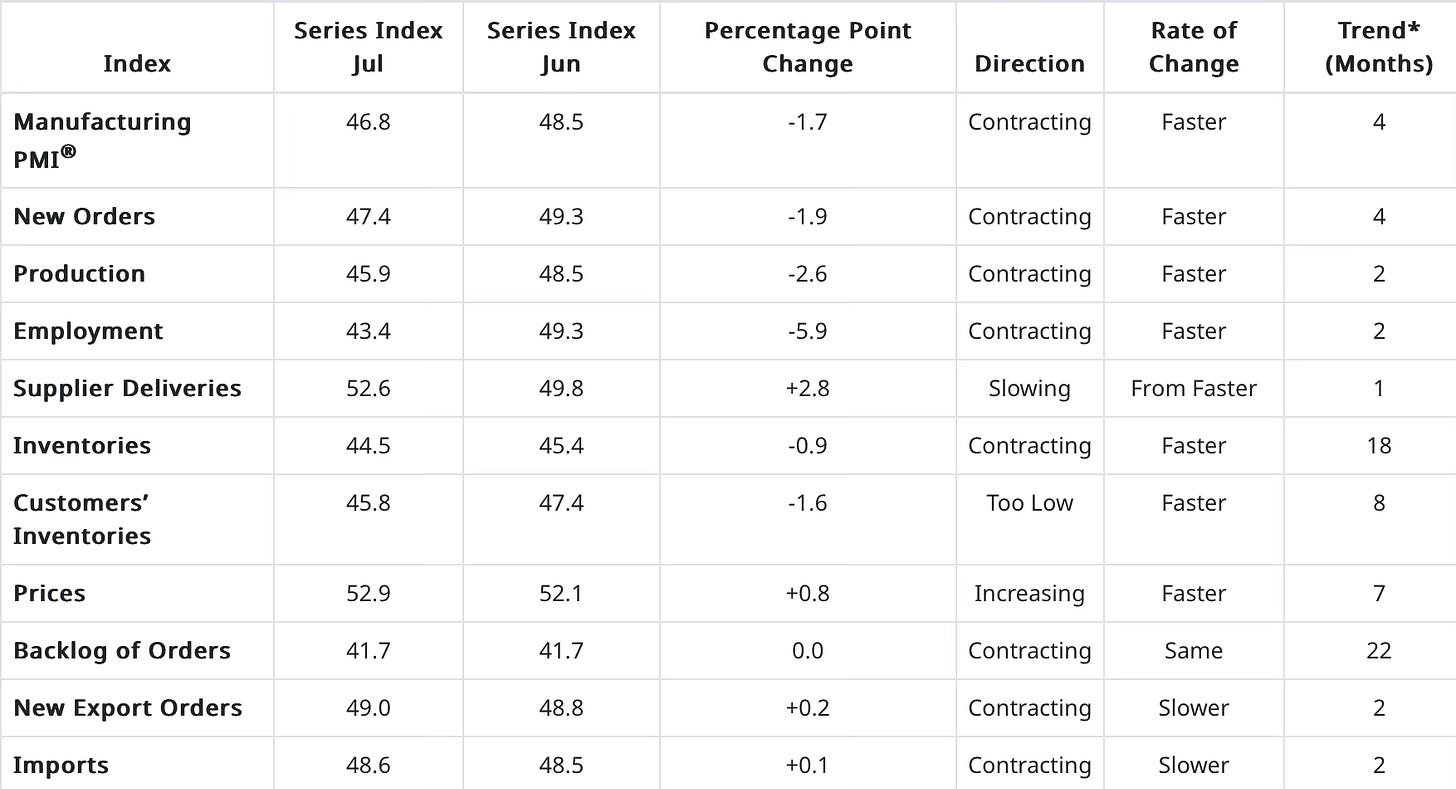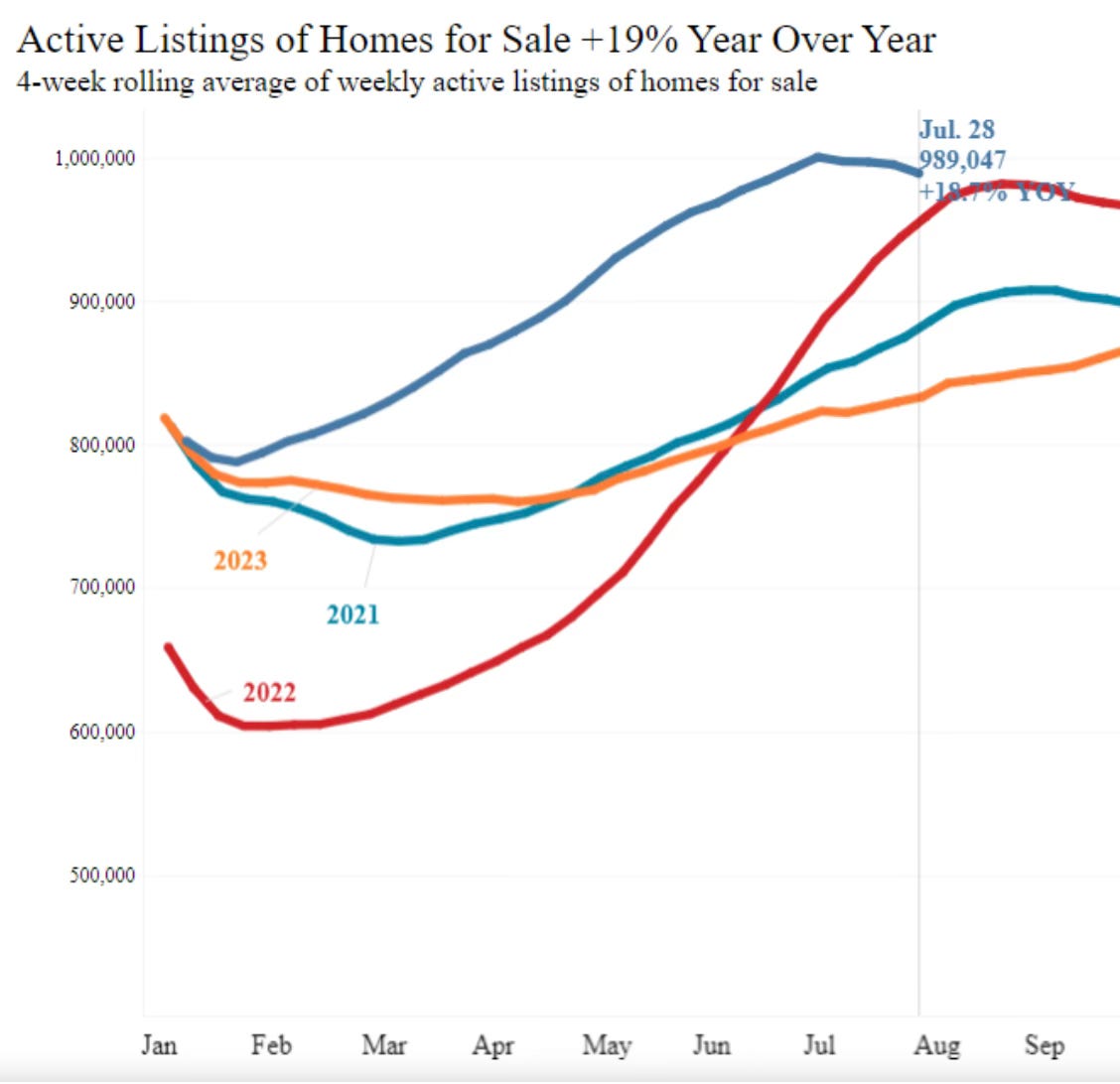With the Federal Reserve FOMC meeting this week, Jerome Powell might as well have taken the stage with AC/DC blasting “Highway to Hell” as economic data worsens and bond yields drop. The 10-year yield has declined from 5% in October 2023 to 4% today, sending bond values up 7% and total returns, including monthly dividend income, up 10%. Investors are increasingly concerned that a slowing economy might turn into a crashing one reminiscent of the 1929, 2000, and 2008 crashes. The Federal Reserve’s decision to maintain short-term interest rates at 5.25% to 5.5% is causing significant anxiety, especially as recent unemployment claims rise, real estate, stock declines and ISM data deteriorates, sending investors flocking to the world’s greatest safe-haven asset, gold, which has surged to $2,500 an ounce. It feels like we all have “a one-way ticket on this ride, with no stop signs, or speed limits.”
Before diving into the AI mega stock earnings for AMD, Amazon, and Apple, let’s examine Federal Reserve Chair Jerome Powell’s recent statements and their impact on the economy. According to Chief Economist Greg Crennan, Powell emphasized the need for inflation to reach the 2% target, but current data shows inflation is still closer to 3%, with Core PCE at 2.6% and CPI at 3.6%. Powell also highlighted the importance of employment data for lowering interest rates, stating, “I would not want to see any more cooling in the labor market.” However, recent July job data shows a continuing cooling trend, with jobless claims reaching a new high of 1.877 million Americans since January 2022. Also, the unemployment rate has gone up to 4.3% and total unemployment including those who stopped looking for work is up 7.8% the highest rate since 2021. Even if the Fed lowers rates in September, it will only be by 25 basis points, keeping rates above 5%, as Powell dismissed the possibility of a 50 basis point cut this week. It seems like the job market has a ticket on going down, all the way down.
America’s manufacturing sector continues to contract, with the ISM Manufacturing Index at 46.8% in July, marking the fourth consecutive month of decline and the 20th in the last 21 months. This points to a stagflation environment, with new orders, production, and employment indices all in negative territory. Despite the contraction, prices continue to rise, indicating that current interest rates are not sufficient to lower inflation. The Prices Index registered 52.9%, up from 52.1% in June, and has been on an upward trend for seven months. This suggests that real-world growth, when adjusted for inflation, is either zero or negative. America’s manufacturing is no doubt echoing AC/DC’s “On the Highway to Hell.”
The real estate market continues to languish in a recession that risks deepening into a depression. Pending home sales are down -5.7% year-over-year, the biggest decline in nine months, and mortgage-purchase applications are down -14% year-over-year. Demand for homes is at record lows, even worse than during the 2008 crisis, while supply is rising rapidly—up 5% year-over-year, with active listings at their highest in three years, up 19%. This glut of supply further exacerbates the market’s troubles. For real estate sellers, it’s like being “on the way to the promised land, on the highway to hell.”
In light of this troubling data, the AI stock bubble appears poised to burst, but one asset stands out amid the chaos: gold. Gold hit $2,500 an ounce this week, marking a world history record high and the best-performing asset of 2024, up an astounding 20%. Since inflation began surging in December 2021, gold has risen 42%, while the Nasdaq AI stock index is up only 9%. When adjusted for inflation, the Nasdaq is actually down 1%. While many on Wall Street deemed inflation transitory, Chief Economist Greg Crennan at Golden Coast Consultants forecasted the inflation storm & inflationary bear market where asset prices rise nominally but fail to keep pace with the cost of living, underscoring the importance of real-world value over speculative gains.
On to the AI chip leaders, Intel had a terrible quarter and with no end in sight for continued declines in revenues and prodfits, the company announced that they will let go of 15% of their workforce and their guidance for the next quarter missed expectations. Intel said that they don’t see any short-term growth for AI-powered chips until 2026. This is extremely worrisome for shareholders, as the company is valued with a P/E ratio of 29. The stock price fell -18% after hours and is now down -60% in 2024 alone. AMD, the closest competitor to Nvidia and the first major AI chip company to report earnings, beat Wall Street expectations, but its stock has plummeted into a bear market, down -35% from its high and over -20% in 2024. With a P/E ratio of 161, a market cap of $220 billion, and annual profits of $25 billion, AMD appears significantly overvalued. Given its current profit margins of 4.5%, the correct P/E ratio should be around 8.8, not 161, implying the stock price should be 94% lower than it is today. To justify the $135 stock price with a P/E ratio of 161, annual profits would need to rise dramatically to approximately $1.37 billion, highlighting the significant overvaluation risk. As the stock enters a bear market, AMD is “Goin’ down, party time, joining my friends on the highway to hell.”
(To continue reading the in-depth analysis on Apple and Amazon earnings that you can only find here at the Coastal Journal consider becoming a paid subscriber and continue reading)
Make sure to follow us on all social media platforms.
Keep reading with a 7-day free trial
Subscribe to The Coastal Journal to keep reading this post and get 7 days of free access to the full post archives.







